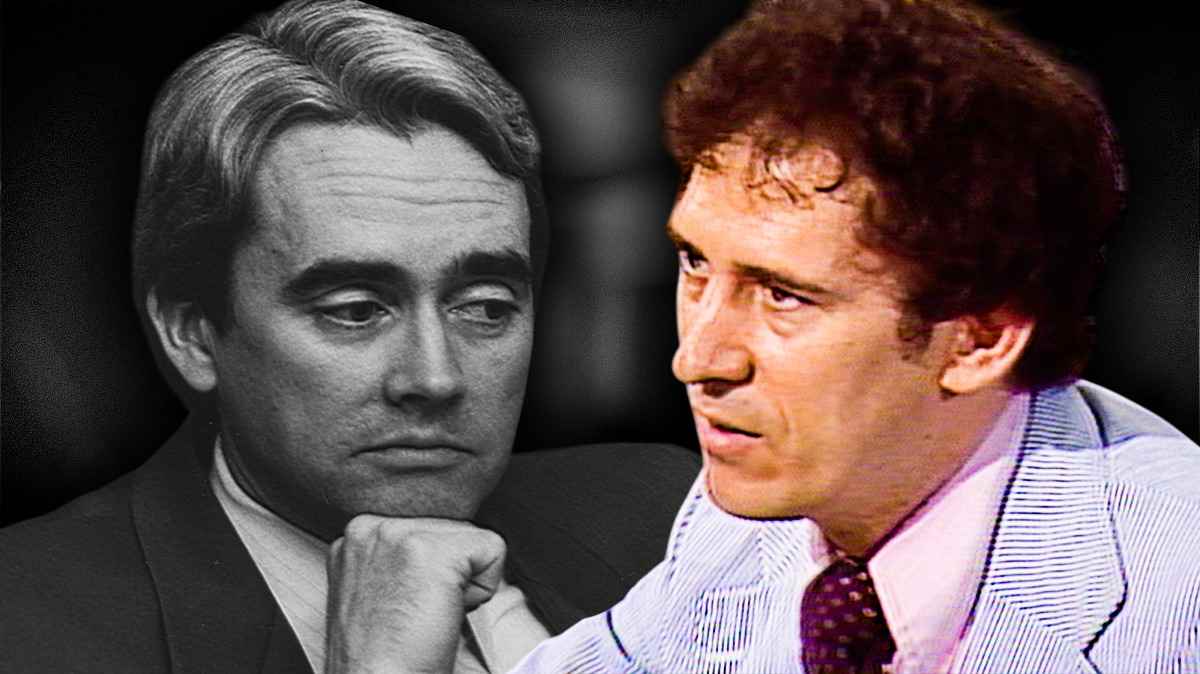'The White House Effect' Recap: What Happened At The Earth Summit In 1992?
1 day ago
The White House Effect is a fascinating documentary film recently released on Netflix that takes a detailed look into how environmental issues were swiftly politicized in the 1990s, leading to questionable measures being taken by the country. Despite environmental issues having been at the center of George H. W. Bush’s presidential campaign before the 1989 elections, there were repeated discussions on how he was simply not doing what he had promised after becoming the 41st President of the United States. The White House Effect takes a look at the factors that were responsible for these systemic failures, making for an intriguing and stirring watch.
How had global warming become a much-discussed issue by 1989?The first major moment with regard to the government growing concerned over environmental issues that The White House Effect addresses is President Jimmy Carter’s appeal to the public in 1977 to make certain sacrifices for the sake of our planet. This public appeal, telecast all over the country, was triggered by the report of the deputy head of the National Center for Atmospheric Research, climatologist Dr. Stephen Schneider, who had been studying the gradually increasing temperatures through the 1970s, along with his team. After going public with his findings, Schneider wrote an appealing letter to President Carter, asking him to address the issue of rising carbon-dioxide levels in the environment, which was a direct result of the excessive burning of fossil fuel that led to greenhouse gas emissions.
Taking the matter earnestly, Carter urged the citizens to think about conserving fossil fuels and energy, not only to protect the environment but also to avoid severe shortages because of the dwindling reserves of natural resources. The government soon actively started promoting the use of solar energy, with citizens readily following suit. Although alternative sources of energy were starting to be adopted, there was still no easy way to substitute oil, and there were fears of fuel shortages similar to what the country had witnessed only some years ago. The tremendously high demand for fuel, owing to most Americans relying on private cars as their means of transportation, meant that there was a significant reliance on foreign oil sources, which caused its own set of complications.
In 1973, the Arab nations of the Organization of Petroleum Exporting Countries (OPEC) decided to stop exporting oil to the US because of the country’s support for Israel during the Yom Kippur War. This embargo, which went on till 1974, led to an oil crisis in the United States, causing citizens to have to wait for hours in queues outside gas stations just to refuel their cars. The government’s measures to control the chaos, like limiting the amount of gas to be allocated to each private vehicle per day, failed in all sorts of ways. These failures were still fresh in the public’s mind in the following years, and while President Carter’s decision to try and find alternatives to fossil fuels was appreciated by many, others remained disgruntled at their government’s inability to fulfill the needs of its citizens.
Rather expectedly, Ronald Reagan exploited these sentiments of the people to rally support during his campaign and promised to bring significant changes to the country’s state of affairs after being elected as the 40th President of the United States in 1981. Whatever steps Jimmy Carter had taken to ensure more sustainable use of natural resources were completely undone by President Reagan, who would go on to become famous for removing business regulations and helping private corporations assert their dominance over the market. He had already made it clear that his administration would withdraw control over matters like oil imports and distribution from the government and return the responsibility to those who knew how to deal with these matters the best—private oil companies. Under the leadership of the new president, numerous regulations, including environmental ones, like anti-pollution laws, were relaxed.
There was an evident push to make things easier for businesses in order to drive economic growth, and environmental concerns were completely sidelined. The major oil companies, such as Exxon and Chevron, absolutely thrived under these new, much-relaxed regulations. Exxon officially sold its solar-collector plant and instead invested over 300 million dollars into coal mining projects, since the regulations on mining had also been significantly relaxed. All these developments naturally had an impact on the environment, leading to extremely hot summers in 1988, which, according to scientists like Dr. Schneider, was a direct impact of the increasing levels of CO₂. The horrific heat wave caused drought conditions in 48 states of the USA, with at least 36 people killed because of sunstroke or other heat-related problems. Citizens were suddenly much more concerned about environmental issues and the phenomenon that was being called global warming, and they naturally became major issues before the 1989 presidential elections.
Why were many citizens disappointed by Bush’s lack of action?During his presidential campaign, George H.W. Bush had made it clear that his stance on environmental issues was quite different from his predecessor’s, and that he actually cared. On multiple occasions during the campaign, Bush had admitted that the government had not done enough to curb pollution and the greenhouse effect that was bad for our planet, and assured citizens that he would give his all to ensure that such mistakes were not repeated. Although the Democrats argued that Bush should not be believed, as the man himself owned an oil drilling company, voters decided to put their faith in him, and George H.W. Bush was finally elected President of the United States in 1989.
He immediately made his intentions to take environmental actions on a national level felt by appointing William Reilly, better known as Bill Reilly, as the head of the Environmental Protection Agency (EPA), the top agency in the country to look into environmental conservation. Reilly had already worked at organizations like the Conservation Foundation and the World Wildlife Fund and was considered someone who truly cared about nature and its protection, and Bush’s decision to make him the official counsel on environmental qualities was applauded by many. In his first address to the Senate, the President made it clear that more action was needed in environmental conservation as well.
However, the accident of the Exxon Valdez mere months later, in March of 1989, and the government’s response to it made a significant portion of the citizens disappointed with Bush’s lack of action. An oil tanker called the Valdez, owned and operated by Exxon, had loaded 1.25 million barrels of oil from the Alaska pipeline and was on the journey back to mainland USA when it ran aground at the Prince William Sound, leading to about 8.5 million gallons of oil leaking into the water. The accident resulted in large-scale death of wildlife in the region because of the heavy oil contaminating the water for months, and more than 3,000 otters and 22 whales were reported to have died. President Bush immediately sent Bill Reilly to Prince William Sound to observe the situation, but there was nothing that could be done to protect the wildlife.
Protests erupted on the streets of America, with citizens rightly villainizing Exxon and blaming them for their complete disregard for nature and wildlife. There were calls to boycott Exxon and other major oil corporations, who had always only concerned themselves with their own profits, and many questioned why President Bush was not doing anything to amend the old ways of letting these corporations wield so much power. There was still hope, though, as the government sat with scientists and EPA members for a hearing on the Greenhouse Effect in April of 1989, in which Dr. Stephen Schneider also presented his opinion to make the authorities and the citizens aware of how greenhouse gases were significantly rising and causing global warming.
In a report officially presented by Dr. James Hansen, another scientist who appeared in the hearing, he had stated how the increase in greenhouse gases will significantly increase the chance of droughts in the USA, which was of major concern to the government. However, in this very same report, Hansen had seemingly stated that his conclusions should not be taken as ‘reliable predictions,’ which made it seem like he was contradicting himself. When he was questioned about this strange contradiction during the hearing, Hansen revealed that the statement was not his own, but had been added to his testimony in the process of review, even though he had objected to its addition. This suddenly revealed to the entire country that the Bush administration had forced the scientist to mince his words and hide his true opinion, essentially committing science fraud by faking the report of a distinguished climatologist.
Who was responsible for the change in the perception of environmental issues?While George H.W. Bush had promised to bring in real changes with regard to environmental issues and had also appointed the experienced Bill Reilly to head the EPA, he had also clearly put a lot of power and influence in the hands of the White House chief of staff, John Sununu. Despite Reilly’s towering presence in the administration, John Sununu pretty much ran the show, leading to an indirect conflict inside the White House, which is the main subject of The White House Effect. The governor of New Hampshire till 1989, Sununu was called up by Bush to be his chief of staff, not just because of his experience as a politician, but seemingly more because of his ability to strictly approach certain matters that the president himself could not personally handle, for the sake of optics.
From almost the beginning of his tenure, John Sununu focused on businesses and finances whenever environmental laws or matters were discussed, always harping on the need for ‘sustainable development’ instead of simply conserving nature at any cost. In reality, it was Sununu, and not the President, who was regularly in talks with the oil corporations, with the companies always trying to earn his acknowledgement and favor. The documentary even presents documents by the chief of staff that stated that the government needed to only make large promises with regard to environmental concerns but not actually deliver on these promises, as the oil corporations and the business they were bringing to the country were simply much more important to him.
Sununu had actually campaigned hard to become Ronald Reagan’s energy secretary a few years earlier, but had failed, and so now that he was inside the White House, his focus was on taking decisions about energy and fuel, despite not technically having been appointed to do so. Corporations like Exxon now directly wrote to him and conversed with him as their direct line of communication with the government, and there remains hardly any doubt that Sununu kept lobbying for them and ensuring that their demands and wishes were met. A very direct effect of this influence of Sununu became evident at the Noordwijk Ministerial Conference, held in November of 1989, in which environment ministers from 60 nations gathered to discuss issues of global warming and climate change. Most of the ministers proposed the control of CO₂ emissions in their respective countries and wanted to set a deadline to achieve these goals by the year 2000. However, the representatives from a small group of Western countries, led by the United States of America, met at the US embassy to discuss a proposal of their own and eventually vetoed the setting of a deadline. It was ultimately because of the USA that the deadline of the year 2000 was never set, clearly because the business projections of the oil companies in the country would have been disturbed otherwise.
How did the oil corporations adapt to their crisis?Now that these corporations started to realize that their influence over the White House, through John Sununu, was becoming much more apparent than before, they decided to adapt to the ways of the new world. Environmental concerns among the citizens and protests against the misuse and destruction of natural resources posed the threat of escalating to a crisis for them, and so they came up with a plan that arguably is still effective to this day. First, the government, including President Bush at a few instances, started calling environmental conferences and meetings ‘anti-growth,’ suggesting that these were just efforts to hamper the economic development of the United States.
To make matters even more complex, John Sununu called for an internal meeting in 1991 with a group of scientists who were supposedly skeptical about the conventional approach to the global warming issue. To put it simply, these scientists essentially believed that global warming was not real, or that it was nothing to be too concerned about, and they stated so during the meeting and then on TV talk shows and programs as well. A narrative was suddenly pushed about the increase in heat just being hot air that was sometimes blowing over the planet, and that greenhouse gases were not harmful but rather could be useful and beneficial for the Earth in the long run.
A significant portion of the American population was quickly won over by these theories, as they nicely fit their personal agendas. For example, many did not want to take anything said by the Democrats seriously, and it was mostly the Democrats who still called for environmental laws. Suddenly, concerns about nature and the environment were termed “leftist” and “communist” jargon, with a sense of anti-nationalism attached to it. With stricter laws on mining, the existing miners would be out of a job, and so their unions started spreading the theories proposed by the skeptics. In reality, this entire phenomenon was funded by the oil corporations, who gradually turned the narrative around in order to avert the crisis.
Dr. Fred Singer, one of the leading scientists among the skeptics, had been paid consultation fees by Exxon, who had actually funded this research. Professor Michaels, another member, happened to be the editor of the World Climate Review, a journal funded by the Western Fuels Association, a consortium of coal companies. Internal documents of both Exxon and the Western Fuels Association reveal how they had actively run these campaigns, targeting print and radio media, to completely reposition global warming as a hoax and a false belief, just so that their bottom line would remain unharmed.
What happened at the Earth Summit in 1992?Around the very same time, the United States pounced on securing its oil arrangements in Iraq, fearing that Saddam Hussein’s increasing power would surely pose an immense threat to the American way of life. The Gulf War was in full swing, while many questioned President Bush’s decision to wage this war, and amidst all this, John Sununu left his position as the White House chief of staff in December of 1991. This finally led to the White House becoming more open to discussions around environmental issues, since Sununu had clearly maintained a tight grip over such matters. The United Nations soon organized a major conference in 1992 at Rio de Janeiro, with its sole focus being on environment and development, and it was called the Earth Summit.
Although President Bush initially did not seem too keen on attending the conference, he did eventually go ahead with the visit, alongside Bill Reilly and other environmentalists. However, through the entire conference, Bush harped on how conventions like the Earth Summit and the resolutions that it tried to achieve would hurt the American economy and would therefore not be acceptable to him and his countrymen. The message was clear—America was more concerned about its finances and positioning itself as the world leader in terms of business, and matters of nature and conserving the environment were only secondary. Although the Earth Summit of 1992 is now considered a historic event organized by the United Nations, there could have been far more effective resolutions had the US not actively objected to them. More than 30 years since then, temperatures have been soaring, with almost every successive year being termed the hottest in the history of the planet, and the current President of the United States does not even believe in climate change, let alone being driven to try and to bring things under control.
...Read the fullstory
It's better on the More. News app
✅ It’s fast
✅ It’s easy to use
✅ It’s free









